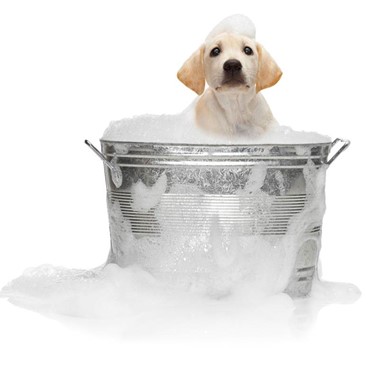Pet Planning
Make a Plan
Plan how you will assemble your pets and anticipate where you will go. If you must evacuate, take your pets with you if practical. If you go to a public shelter, keep in mind your animals may not be allowed inside. Consider family or friends willing to take in you and your pets during an emergency. Other options may include a hotel that allows pets, a kennel or veterinary hospital that does boarding.
Get a free rescue alert sticker from the ASPCA. Display the sticker somewhere visible to rescue workers such as near your front door to let people know there are pets inside your home.

|
Have an evacuation plan for your pet |
| Many public shelters and hotels do not allow pets inside. Know a safe place where you can take your pets before disasters and emergencies happen. |
|
Develop a buddy system |
| Plan with neighbors, friends, or relatives to make sure that someone if willing to care for or evacuate your pets if you are unable to do so. Share your plan with your pet care buddy and show them where your emergency supply kit is located. Ensure they have the means to access your pet and your kit in an emergency. |
|
Have your pet microchipped |
| Make sure to keep your address and phone number up-to-date and include contact information for an emergency contact outside of your immediate area. |
| Contact your local emergency management office, animal shelter or animal control office |
| Contact your local emergency management office, animal shelter or animal control office to get additional advice and information if you’re unsure how to care for your pet in case of an emergency. |
|
Tips for large animals and livestock |
|
Build a Kit
In addition to your own disaster supply kit, build kit that includes basic survival items to keep your pet happy and comfortable. Start with the list below, or reference the Prepare for Emergencies Now: Information for Pet Owners Brochure (Click here for the Spanish version) to find out exactly what your pet needs to be ready.
- Food. At least a three-day supply in an airtight, waterproof container.
- Water. At least three days of water specifically for your pets.
- Medicines and medical records.
- Important documents. Registration information, adoption papers, and vaccination documents.
- First aid kit. Cotton bandage rolls, bandage tape and scissors, antibiotic ointment, flea and tick prevention, latex gloves, isopropyl alcohol and saline solution.
- Collar or harness with ID tag, rabies tag and a leash.
- Crate or pet carrier. Have a sturdy, safe crate or carrier in case you need to evacuate. The carrier should be large enough for your pet to stand, turn around and lie down.
- Sanitation. Pet litter and litter box if appropriate, newspapers, paper towels, plastic trash bags and household chlorine bleach.
- A picture of you and your pet together. If you become separated, a picture of you and your pet together will help you document ownership and allow others to assist you.
- Familiar items. Treats, toys, and bedding can help reduce stress for your pet.
Stay Informed
- Pay attention to wireless emergency alerts for local alerts and warnings sent by state and local public safety officials.
- Listen to local officials when told to evacuate or shelter in place.
- Always bring pets indoors at the first sign or warning of a storm or disaster.

Contact Us
The County Office of Emergency Services (OES)
1055 Monterey Street D430
San Luis Obispo, CA 93408
County OES Business Line: 805-781-5678
County OES Business Email: oes@co.slo.ca.us




